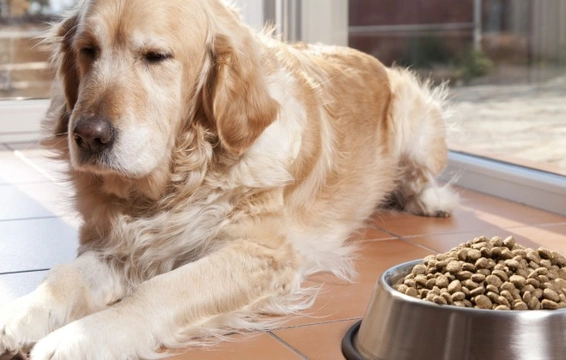
Seven indications that you need to change your dog food
Providing that your dog likes their food, does not suffer from indigestion or other clear signs of problems and their stools are firm, regular and normal, you can be sure that your dog food is doing its job, right? Well, possibly, but there is more to it than that! What, how much and when you feed your dog is something that should be constantly reviewed by the conscientious dog owner, and at some stages in your dog’s life, you will need to change their food for something else, as they pass through their various life stages and need the appropriate diet to support it.
There are various different indications that can let you know that your dog’s diet is not a perfect fit for them, and understanding these and knowing when to make a change can be hugely beneficial to your dog. In this article, we will look at seven indications that it may be time to change your dog’s food. Read on to learn more!
1. Life stage changes
Dog food across virtually every brand from the cheapest to the most expensive is divided up into three types, to fit your dog’s different life stages. First comes puppy food, designed for dogs up to one year of age. Then comes adult food, which is usually designed to be fed from ages one to seven or eight, and then finally, maturity food for dogs over around seven who are entering maturity and ultimately, old age.
While you probably made the transition from puppy food to adult food when your dog came of age, have you checked their adult food, and that it is appropriate for their life stage? Older dogs require different nutrition to their younger counterparts, so check that your dog’s current food is still a good fit for their life stage.
2. Loss of enthusiasm for food
Losing their appetite or being less than enthusiastic about meals can be due to a range of factors, from poor health to filling up on treats to simply not really finding their main food appealing. If your dog looks disappointed when they get given their dinner, look into other alternatives that you may be able to try out, to appeal more to your dog’s palate and get their enthusiasm back for mealtimes.
3. Lethargy and loss of energy
Your dog’s food should be able to support a fit, active life, and there is a fine line between feeding too much or too little, and feeding the wrong amount for the amount of activity that your dog performs. If your dog is very active or takes part in canine sports, they will need a high energy dog food to support this, and standard commercial diets do not always fit the bill. Consider changing to a better food that can match their energy levels!
4. Poor coat condition
If your dog has a persistently dull, unhealthy looking coat, their food should be the first thing that you look at! Complete dog foods should support your dog’s whole body and make them shine with health, so if your dog’s coat is not what it should be, they may be missing out on nutrients that you could provide by changing their diet.
5. Putting on weight
If your dog is gaining weight, there are two food-related reasons for this: you are either feeding your dog too much in relation to their activity levels, or their food is not well designed for the level of activity that they have. Changing to a food that is designed to be filling while not providing a high level of calories can help to get your dog’s weight back under control without leaving them feeling hungry.
6. Dietary upsets
If your dog seems to suffer from indigestion, an urgent need to toilet after meals or has soft, loose stools, constipation or any other digestive problems, they may be having an issue with their food. This may be a sensitivity to one of the ingredients within it, or a simple case of their general diet not perfectly agreeing with them.
Often, simply changing to a different food can make a lot of difference.
7. Allergies
Many dogs suffer from allergies of one form or another, and allergies to food is one of the most common of these. These usually come about due to one particular ingredient in the food not agreeing with your dog, whether that be a flavouring or colouring agent, or an actual ingredient such as wheat or another grain.
If your dog suffers from allergies, one of your first steps to tackle this should be to change your dog’s food to something that is designed for sensitivities and that contains the minimum amount of different ingredients and no colours or flavourings. You may be surprised at the effect that such a small change can have on your dog’s general comfort levels!



